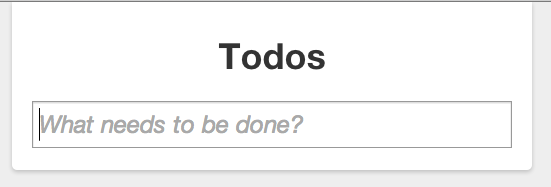About Javascript Patterns , you can see this github:
http://shichuan.github.com/javascript-patterns/
Issue1:Function Declarations
在談談這個主題之前,我想要先了解js架構:
function a(){
alert('123');
}
console.log(a);
這時候如果把console.log(a)這行搬到第一行時,也就是如下:
console.log(a);
function a(){
alert('123');
}
他仍輸出一樣的結果,原因是js在讀取時會先把所有funciton先讀,然後再讀其他的東西.
不夠清楚?
在舉個例子,如果今天出現如下狀況:
console.log(a.toString());
function a(){
alert('123');
}
function a(){
alert('567');
}
則出來的結果是:
function a(){
alert('456');
}
[Finished in 0.1s]
也就是說 如果遇到兩個都是相同命名的function時,後面的會覆蓋掉前面的同名function.
OK,直接切入這個主體,先看看這個程式碼:
function getData() {
}
這個程式碼本身來說是沒有問題的,但是原因在於js開發者必須要盡量把所有定義的東西用object去定義,這是一個良好的習慣,因為這樣可以幫助開發者去理解和使用他,本主題有討論兩種改善方式:
第一種:
var getData = function () {
};
第二種:
var getData = function getData() {
};
第二種的最大好處是在於,可以讓getData function 可以去做內部call迴圈,比如說:
var a = function a(){
console.log('123'+a);
};
a();
結果為:
123function a(){
console.log('123'+a);
}
但是,有件奇怪的事情來了,如果我有個代碼如下:
console.log(a.toString());
var a = function a(){
alert('123');
};
竟然出現錯誤!若改成:
var a = function a(){
alert('123');
};
console.log(a.toString());
則成功,這樣的例子可以說明,js在讀取時事先把function先讀完,而已經被定義過的object不會先讀取.
Issue2:Conditionals
- pattern and antipattern of using if else
https://github.com/shichuan/javascript-patterns/blob/master/general-patterns/conditionals.html
先來看第一個程式碼:
if (type === 'foo' || type === 'bar') {
}
=== 其實就是”格式符合”且”內容物完全一樣”則就是true 不符合則就是false
console.log(1 === 1) 結果就是true 因為兩邊都是number
console.log(“1” === 1) 結果就是false 因為前者是string 後者為number
console.log(“1” === “2”) 結果就是false,雖然都是string,但是string 的1與2不同
作者建議的寫法一:
if (/^(foo|bar)$/.test(type)) {
}
這部份就是regex test,詳情我建議看這網站,很詳細
http://blog.roodo.com/rocksaying/archives/2670695.html
這個作法其實就是直接轉成machine language,好處是在簡短的句子比對效能很快,但是他的時間複雜度為O(N),所以在長句子的比較會不見得比第一種或第二種快,可以參考這個demo:
http://jsbin.com/uzuxi4/4/edit
不過我覺得這個在解讀程式上時真的有點難懂,在寫時還是要考慮一下你的partner看不看的懂
作者建議寫法二:
if (({foo:1, bar:1})[type]) {
}
其實這個就是最簡單的hash table search,他的時間複雜度平均為O(1),在分析超長子句時在理論來說較上述來的好,以上相關的討論可以參考這個,非常的詳細:
http://stackoverflow.com/questions/3945092/why-the-third-option-is-better-than-regex
接下來在line36~97部分在講關於BST(Binary search tree),作者範例很清楚就不多說,line103~114部分,則是建議使用array的形式取代掉多種if else的假設,我認為這個方式對於工程師解讀上是很有幫助的。
另外除了array方式,我也推薦另外一種作法:
var hi = {
a:function () {
console.log("123")
},
b:function(){
console.log("456")
}
}
hi.a()
印出的結果為:
123
這樣的形式也可以幫助工程師能夠理解,而line120~138部分則是盡量使用logical operators可以幫助我們解讀code.
我在參加js討論會,講者tonyQ提過這個有趣的example:
function test(option){
option = option || {};
console.log(option.start)
}
test(null);
這個印出來的結果是:
undefined
原因是null不屬於obj,裡面也沒有start參數,當然undefined,若改成:
function test(option){
//option = option || {};
option.test = option.test || {};
console.log(option.test.start)
}
test({test:{start:1}});
則印出的結果是1,這個方法可以幫助我們快速去理解obj內部的解析,值得學習!另外有個議題還蠻有趣的,請看:
console.log(true || false);
console.log(true && false);
以上的結果竟是….
true
false
不難理解,請自行想想 …
Issue3:Access to the Global Object
- access the global object without hard-coding the identifier window
https://github.com/shichuan/javascript-patterns/blob/master/general-patterns/access-to-global-object.html
這邊是指如何去高效率的調用global object,並且讓他們可以通過ES3, ES5 and ES5-strict.
var global = (function () {
return this || (1, eval)('this');
}());
效能展示可以看這個:
http://jsperf.com/globalx
我們來看這個例子:
var x = 'outer';
(function() {
var x = 'inner';
eval('console.log("direct call: " + x)');
(1,eval)('console.log("indirect call: " + x)');
})();
輸出的結果為:
direct call: inner
indirect call: outer
我曾經想過如果把(1,eval)的1改成null or 0 or undefined 結果通通都是這個,至於為何以下的討論串就有行這樣說:
http://stackoverflow.com/questions/9107240/1-evalthis-vs-evalthis-in-javascript
“The expression (1, eval) is just a fancy way to force the eval to be indirect and return the global object.”
Issue4:Single var Pattern
- use one var statement and declare multiple variables
https://github.com/shichuan/javascript-patterns/blob/master/general-patterns/single-var-pattern.html
一般而言,我們通常會這樣定義變數:
function func() {
var a = 1,
var b = 2,
// function body...
}
這是沒有問題的,但是對於多寫一個var實在沒有額外好處,因此建議這樣寫:
function func() {
var a = 1,
b = 2,
// function body...
}
這樣的好處可以幫助自己去強迫把宣告變數的地方放在同一個,可以幫助理解,也可以幫助自己減少忘記宣告變數的動作,
那如果今天宣告的變數裡面有長字串(或者是包html的話),因為包這些字串每次讀取會增加很多空間,因此也建議類似這種東西要先去做宣告變數,如下:
function updateElement() {
var el = document.getElementById("result"),
style = el.style;
// do something with el and style...
}
Issue 5:Hoisting
– var statements anywhere in a function act as if the variables were declared at the top of the function
https://github.com/shichuan/javascript-patterns/blob/master/general-patterns/hoisting.html
Issue 6:for loops
– optimized for loops
https://github.com/shichuan/javascript-patterns/blob/master/general-patterns/hoisting.html
這是一個很基本的javascript 變數宣告的觀念,首先,看如下代碼:
myname = "global"; // global variable
function func() {
console.log(myname); // "undefined"
var myname = "local";
console.log(myname); // "local"
}
func();
第三行會出現undefined,這是因為在function外宣告的global variable並不會被導進function內變成local variable,因此第三行的console.log因為在他之前沒有宣告local variable,已故呈現undefined
myname = "global"; // global variable
function func() {
var myname; // same as -> var myname = undefined;
console.log(myname); // "undefined"
myname = "local";
console.log(myname); // "local"
}
func();
這個情況是,他先宣告了某個local variable,但是因為他並沒有定義這個變數,以至於第四行的console.log輸出為undefined.
Issue 7:for-in loops
Issue 8:(Not) Augmenting Built-in Prototypes
- only augment built-in prototypes when certain conditions are met
Issue 9:switch Pattern
– improve the readability and robustness of your switch statements
https://github.com/shichuan/javascript-patterns/blob/master/general-patterns/switch-pattern.html
盡量多使用switch 方式,也請謹守下面switch的格式,break;和default:千萬別忘記打
var inspect_me = 0,
result = '';
switch (inspect_me) {
case 0:
result = "zero";
break;
case 1:
result = "one";
break;
default:
result = "unknown";
}
Issue 10:Implied Typecasting
– avoid implied typecasting
https://github.com/shichuan/javascript-patterns/blob/master/general-patterns/avoiding-implied-typecasting.html
其實這邊在討論javascript中,要注意隱式類型的轉換,比如說0在==比較中代表的是false,而1代表的是true,他的範例如下:
var zero = 0;
if (zero == false) {
console.log('123');
}
輸出的結果為:123,另外我試個有趣的實驗,代碼:
var zero =[] ;
if (zero == false){
console.log('23');
}
//Output:23
以上當我設定var zero ={} 或者 ‘’ 或者 []時全部都是一樣的結果,那麼若我試試:
var zero =['123'] ;
if (zero == false){
console.log('23');
}
//竟然沒有console.log的值!在試試true
if (zero == true){
console.log('23');
}
//一樣沒有console.log的值!
同樣試過string.object也是一樣,這個小實驗蠻有趣的!
Issue 11:Avoiding eval()
https://github.com/shichuan/javascript-patterns/blob/master/general-patterns/avoiding-eval.html
避免使用eval();
Issue 12:Number Conversions with parseInt()
- use the second radix parameter
Issue 13:Minimizing Globals
- create and access a global variable in a browser environment
https://github.com/shichuan/javascript-patterns/blob/master/general-patterns/minimizing-globals.html
盡量減少宣告global variable,否則很容易經過多種方法就讓他被讀出來
myglobal = "hello"; // antipattern
console.log(myglobal); // "hello"
console.log(window.myglobal); // "hello"
console.log(window["myglobal"]); // "hello"
console.log(this.myglobal); // "hello"
Issue 14:The Problem with Globals
– various problems with globals
https://github.com/shichuan/javascript-patterns/blob/master/general-patterns/globals.html
這是補充issue13
function sum(x, y) {
// implied global
result = x + y;
return result;
}
sum(1,2);
console.log(result);



